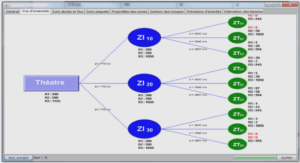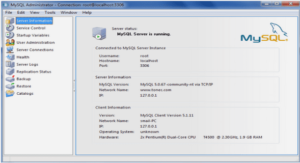HISTORICAL DATA
Dans ce manuscrit, les données historiques sont des données ponctuelles qui représentent des évènements remarquables survenus pendant des périodes dans lesquelles les instruments de mesure n’ont pas enregistré la variable considérée. Les trois types les plus communs de données historiques seront considérés dans cette étude : la donnée exacte, un intervalle de valeurs et une borne inférieure dépassée par la valeur historique lors de l’événement. La connaissance d’une ou plusieurs événements historiques est un sujet difficile à traiter. En effet, les données historiques sont liées à différentes types d’infor- mations et de sources qui ne sont pas le plus souvent facilement interprétables et accessibles. Par conséquent, la collecte des données historiques est une pro- cédure compliquée. Toute l’information historique repérée doit être exploitée et, dans la mesure du possible, convertie en données historiques que pourraient être ensuite utilisée pour des applications statistiques d’estimation des événements extrêmes. Pour ces raisons, une approche de collecte et de validation des don- nées historiques suivie d’un exemple d’application est présentée dans ce cha- pitre. La collecte doit être démarrée à partir des bases des données historiques déjà existantes et étendue à des sources accessibles. Ensuite, une validation de toutes les données collectées doit être réalisée grâce à l’apport essentiel d’un historien compétant sur la période examinée.
Historical data
Historical data are typically quantitative or qualitative isolated data values representing an ex- ceptional event of the past. In this manuscript, historical data are defined as all quantitative isolated data values representing an extraordinary event which has occurred in a period in which the considered variable was not recorded by a measuring device. For this reason, historical data represent not only events of the past but also exceptional events in which, for whatever reason, the measuring device was not working. The discovery of historical coastal events that can potentially provoke coastal flooding is a major challenge for an engineer dealing with estimations of extreme coastal events. Finding quantitative data values of historical events is a complex procedure. Information of a particular past event can be used to detect or reconstruct a quantitative data associated to that event. After a wide investigation of different sources, this is also possible by means of a good knowledge of the period of the event that only a qualified historian may have. An approach to collect and validate historical data is proposed in the following chapter. Over the last twenty years, there have been a number of extraordinary storms such as Xynthia (February 2010) and Lothar and Martin (December 1999) storms, which impacted the European Atlantic coasts. These storms caused several disasters and loss of human life. These have been sometimes defined in the media as exceptional events that have never previously occurred on French coasts until now, however this is incorrect. A wide investigation of all the historical storms which impacted a particular site is required to define the rarity of an extreme event. In particular, Garnier and Surville (2010) identify several catastrophic flood events on the French Atlantic coasts during the last 500 years with a similar vulnerability to the Xynthia storm. For this reason, also if a recent exceptional storm can be perceived by people as the strongest event ever happened in a particular location, it may have previously occurred because history often repeats itself.
Any type of information is useful to retrace the past and to collect, reconstruct or validate a historical data. For example, a painting, a newspaper of the time, a preserved manuscript, a document from municipal archives, an ecclesiastical text, some private letters sent to ask for help from friends and family, a water mark left in an ancient church or building are only a few sources containing useful information of the past which can be used to retrace a historical event. In addition, the vulnerability evaluation of the society of the period is required in order to un- derstand the relevance of a particular past event. This can be used to reply to the ever more frequently asked question regarding the occurrence of a remarkable flood. Although finding the occurrence of an exceptional past event is challenging, the quantification of a historical event can be considered more complex. In fact, only a small portion of the iden- tified historical events may be expressed with some quantitative data, for instance, the case of water marks or overflows of sea levels in a coastal town. In these and other cases, many attempts have to be performed to retrace and rebuild the numerical value of the considered variable that represents the historical event.




